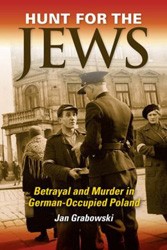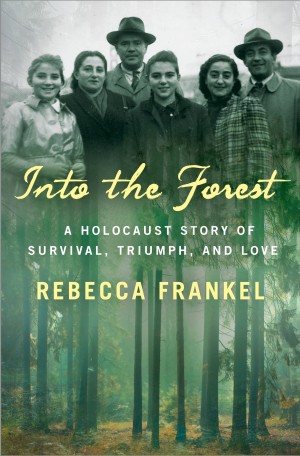In his previous book, Neighbors (2001), which was a National Book Award nominee, Jan Gross, who teaches history at Princeton University, described the brutal manner in which 1,600 Jews of the Polish town of Jedwabne were murdered in June 1941 by their Polish neighbors. What was startling about this atrocity was that the newly occupying German army did not compel the massacre in a town where ostensibly the Jewish and Polish inhabitants had previously enjoyed amicable relations.
Fear returns to the subject of Gross’ earlier work, only this time his focus is on the question of why Polish anti-Semitism continued to be endemic throughout the country after the war when most of the country’s 3.5 million Jews had already been annihilated by the Nazis. Although much of his investigation focuses on the more widely known Kielce pogrom in July 1946, he notes that earlier attacks against the remnants of the Jewish population had occurred in Rzeszow in June 1945, and Krakow in August of the same year. In all, anti-Jewish violence accounted for the killing of between 500 and 1,500 Jews (Gross accepts the more widely accepted number of 1,500 murdered by the Poles.)
Gross argues that the violence against the Jews was driven by the widespread collusion of the Poles with the Nazis in the plunder of Jewish property and the fear that the remaining victims of the Holocaust would return and demand that their property be returned. He rejects the argument that Polish hatred toward the Jews was due to their association with the Soviet regime that was imposed on the country after the war. Using convincing documentation, Gross shows how few Jews were members of the Communist Party in post-war Poland, and that those who did become communists did so because they were prohibited from joining more mainstream Polish political organizations both prior to and after the war where, with the exception of the Zegota organization that befriended Jews during the war, most Polish resistance groups were as anti- Semitic as they were anti-Nazi.
The author rejects the contention that the post-war pogroms in Poland is the story of frenzied mobs, moved by tales of Jewish ritual murder, which the Polish Catholic Church went to pains not to deny, or the association with communism, but rather by the “widely shared sense in Polish society that getting rid of the Jews, by killing them if necessary, was permissible.” Gross can only account for the virulent postwar anti-Semitism in Poland because it was embedded in the society’s opportunistic wartime behavior.
“Jews were perceived as a threat to the material status quo, security, and peaceful conscience of their fellow citizens after the war because they had plundered what remained of Jewish property as well as Jews’ social roles, which had been assumed by their Polish neighbors in tacit and often opportunistic complicity with Nazi-instigated institutional mass murder.”
For Gross, therefore, the pogroms against the Jews were motivated not by acting out “their vampire fantasies of ritual murder or their Judeo-Communist fantasies,” or by beliefs inculcated by the Nazis, but by defending their material interests, quite often premised on murky deals or outright criminal behavior.
Fear makes for riveting reading and provides a great deal of insight into the prevalence of anti-Semitism in Poland, and by extension the hatred of Jews even in countries that no longer have Jewish populations. If there is a criticism of Fear, it can be found in the short shrift Gross gives to the Christian anti-Jewish animus of one of Europe’s most Catholic countries. Although Gross details the role the canard of “ritual murder” played in spreading the pogroms, centuries of the Polish Catholic Church teaching contempt for the Jews and the charge of deicide, are ignored as factors in the tacit permission that Poles received to murder Jews.



